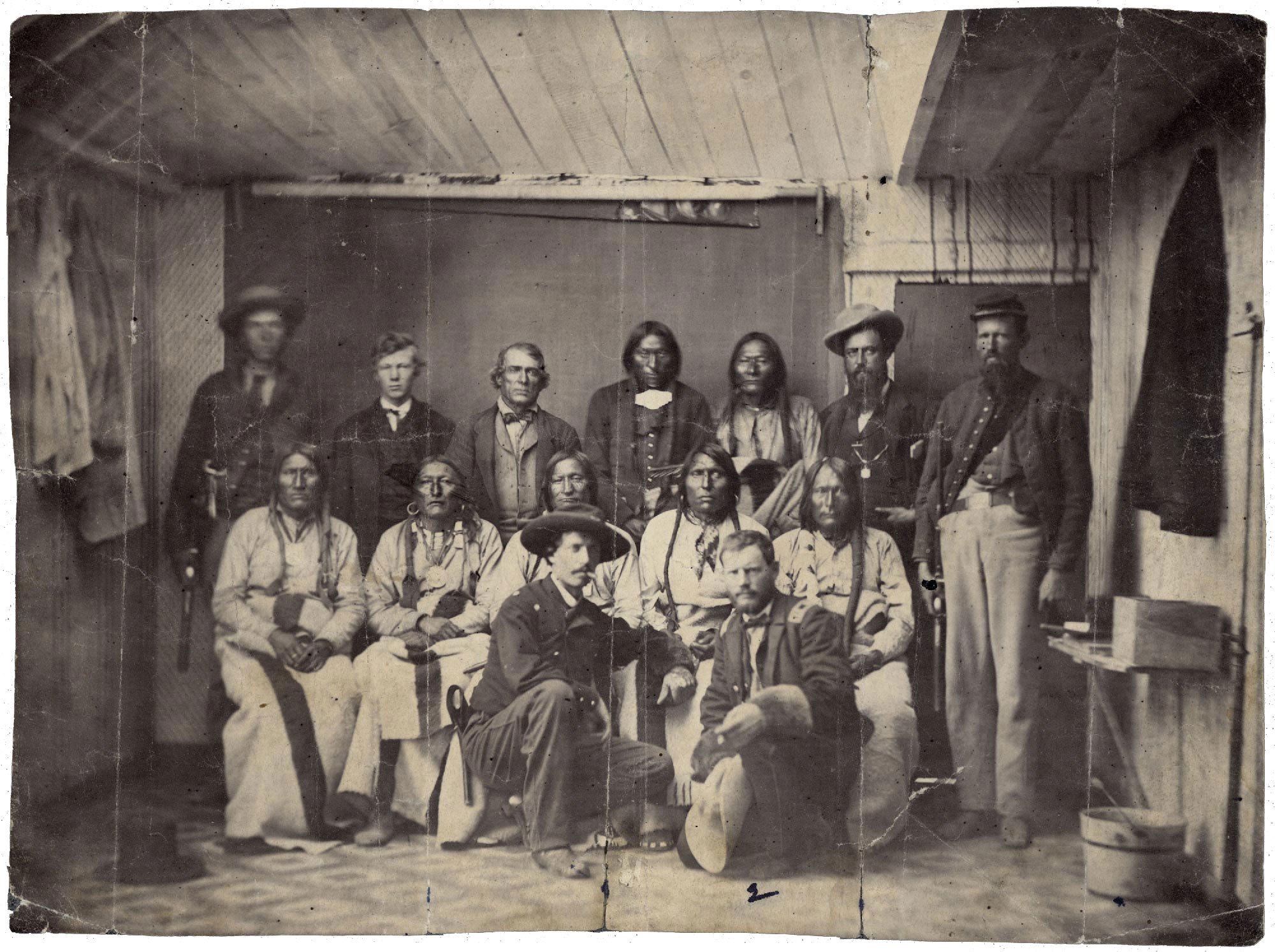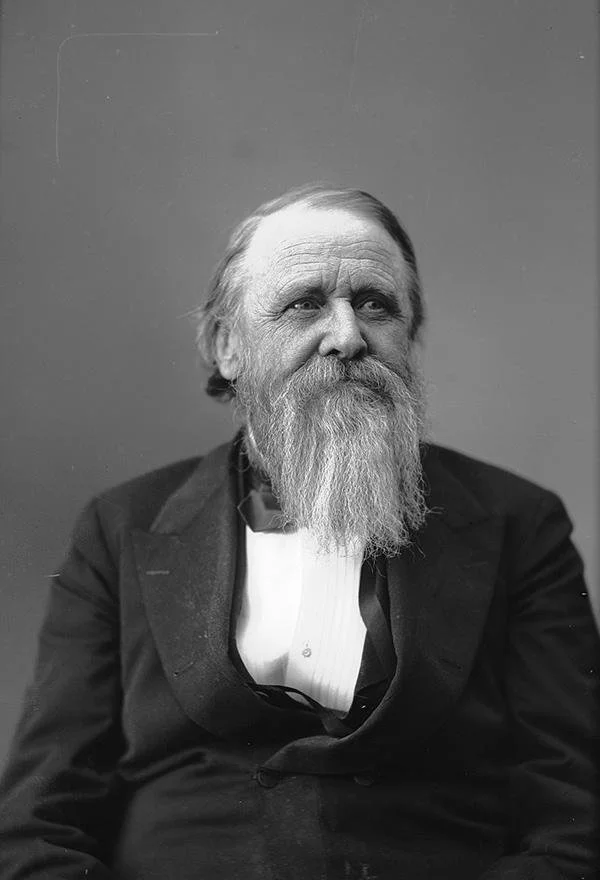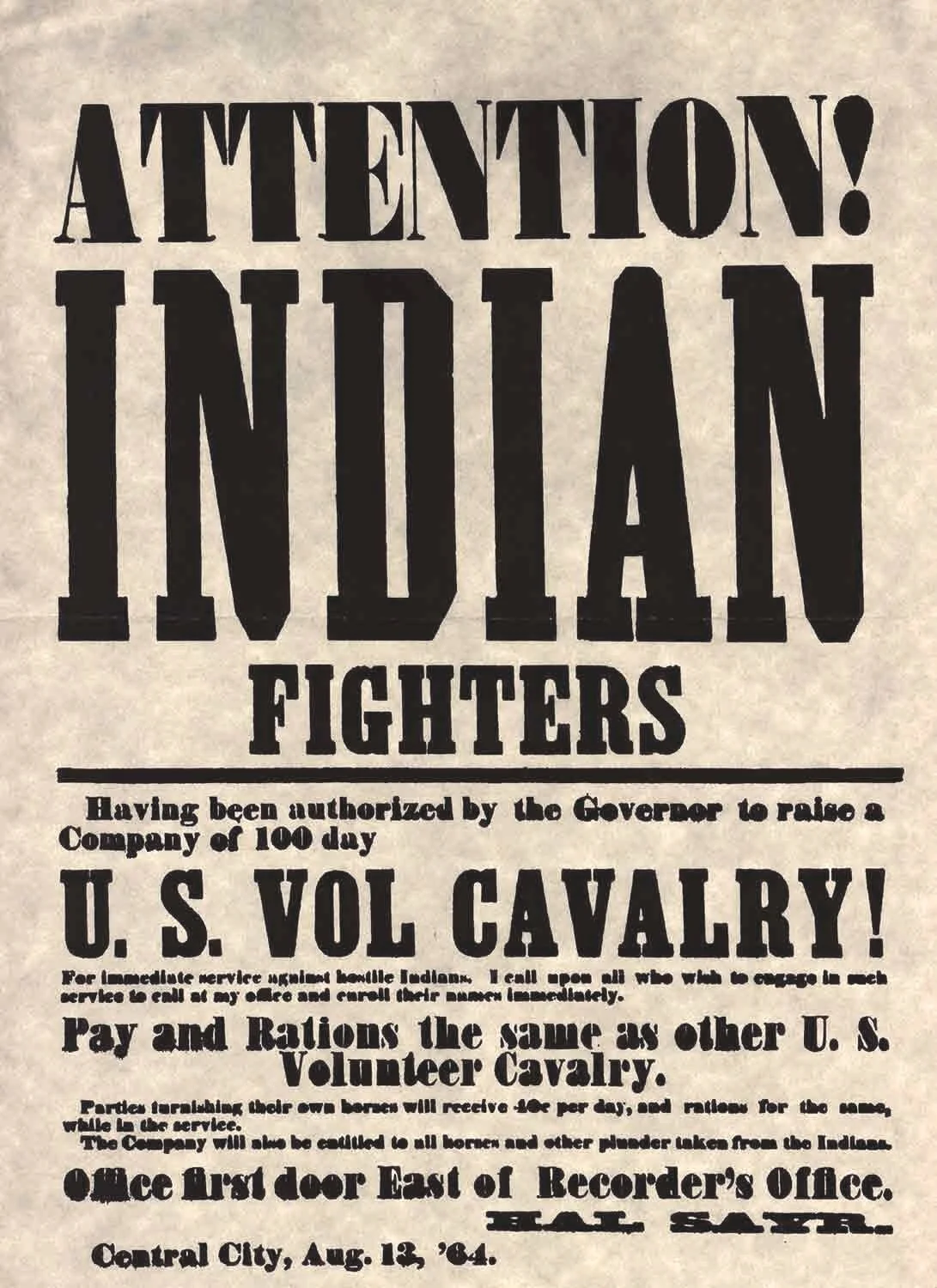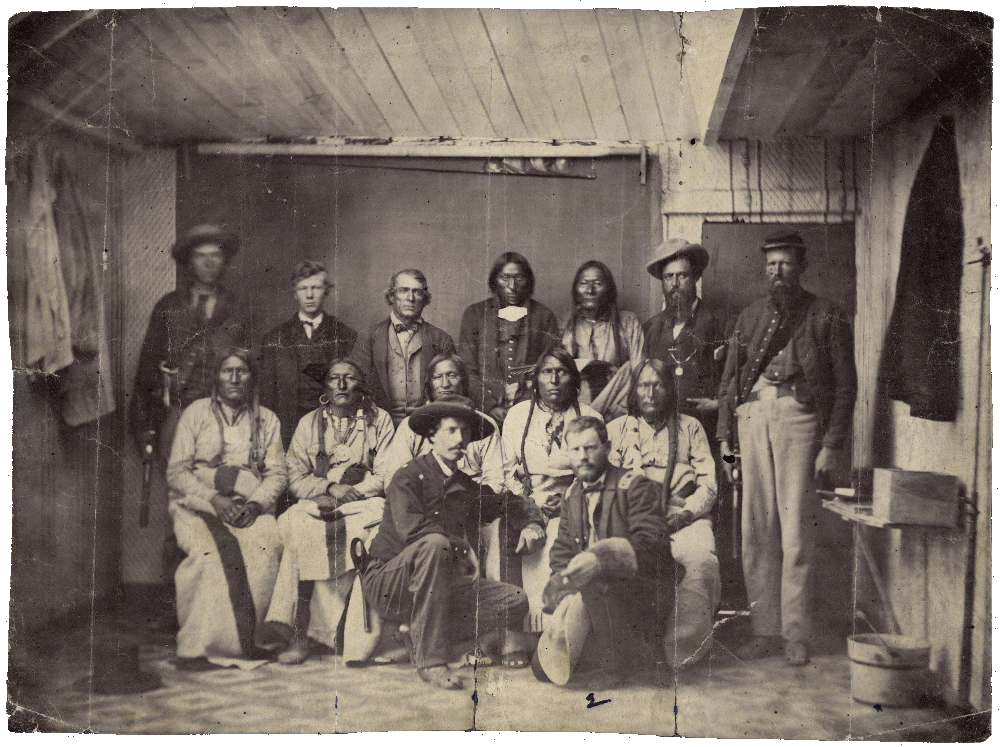
Leadup to the Massacre
Talks of Peace Amid a Military Buildup
The Hungate family was murdered about 25 miles southeast of downtown Denver. The bodies were exhumed, brought to Denver, and publicly displayed. With no evidence, many Coloradans speculated that Cheyenne or Arapaho were to blame for the family's murder inciting paranoia about impending Indian attacks.
With the Civil War reaching into the West, rumors spread that the plains tribes were “Red Rebels” allied with the Confederacy to drive the whites off the plains of Colorado. Territorial Governor and Superintendent of Indian Affairs, John Evans, issued a proclamation to all “Friendly Indians of the Plains” on June 27, 1864:
June
“I direct that all friendly Indians keep away from those who are at war, and go to places of safety. Friendly Arapahoes and Cheyennes belonging on the Arkansas River will go to Major Colley, U. S. Indian agent at Fort Lyon, who will give them provisions, and show them a place of safety.”
Colorado Territorial Governor John Evans
Frustrated that his first proclamation to “...induce all of the Indians of the plains to come to said places of rendezvous, promising them subsistence and protection…” had resulted in little compliance, Territorial Governor John Evans issued a second proclamation on August 11, 1864:
August
“...Authorizing all citizens of Colorado… to go in pursuit of all hostile Indians on the plains…to kill and destroy, as enemies of the country, wherever they may be found, all such hostile Indians.”
At the same time, the War Department authorized the 3rd Colorado Cavalry, a 100-day U.S. volunteer regiment, for service during the perceived emergency of an Indian war. The military district of Colorado was placed under the command of Colonel John M. Chivington.
Recruitment Poster for the 3rd Colorado Volunteer Cavalry
Cheyenne and Arapaho Chiefs were escorted to Camp Weld near Denver for a conference with Territorial Governor and Superintendent of Indian Affairs, John Evans, and Colonel Chivington, Commander of the Military District of Colorado. The Chiefs departed the meeting believing they would be safe if they went into the protection of Major Wynkoop at Fort Lyon.
September
Camp Weld Conference, September 28, 1864, Cheyenne and Arapaho chiefs meet with Territorial Governor John Evans and Colonel John Chivington
Following the Camp Weld Conference, bands of Cheyenne and Arapaho moved to a known camping location on Big Sandy Creek, within the reservation defined by the Fort Wise treaty.
Arapaho Chiefs Little Raven and Spotted Wolf - with more than 500 Arapahos and some Cheyennes - moved close to Fort Lyon, but when “prisoners rations” left them nearly starving, they moved about 60 miles down the Arkansas River.
Chief Black Kettle, other Chiefs, and Cheyennes and Arapahos under Chief Left Hand - who had also proceeded to Fort Lyon according to the Camp Weld agreement - moved to the campsite on Sand Creek where other bands were already established. The village consisted of about 140-150 lodges housing 700-750 people, only about 100 of whom were fighting-age men. Nearby, as many as 2000 horses ranged.
October
When Major Wynkoop departed Fort Lyon for his new command at Fort Riley, Kansas, he was confident he had established a level of equilibrium between Colorado officials and the Cheyenne and Arapaho leaders. Wynkoop left Fort Lyon under the command of Major Scott Anthony.
November
“I want no peace until the Indians suffer more.”
Colonel John M. Chivington
Nearing the end of their enlistment, and having seen no battle, the “The Bloodless 3rd” Regiment left Denver. At Fort Lyon, Colonel Chivington announced his plan for attacking the Indians in the vicinity. Many of the 1st Colorado Regiment officers at Fort Lyon had been members of the Smoky Hill expedition in September and firmly believed that Chief Black Kettle had prevented a bloody battle and probably saved their lives. They wanted no part of an expedition to Sand Creek.





